28. Richard Hamilton
(London 1922 - 2011 Henley-on-Thames, London)
"I'm Dreaming of a Black Christmas"
Farbsiebdruck auf Lichtdruck mit Collage 1971
75 x 100 cm Abb. 50,8 x 76,1 cm
sign. num.
Auflage 165 Exemplare
Lullin 082
[24270]
"What an artist is trying to do for people is bring them closer to something, because, of course, art is about sharing: you wouldn’t be an artist unless you wanted to share an experience."
David Hockney
MADE IN BRITAIN II
Patrick Caulfield, Michael Craig-Martin, Ian Davenport, Peter Doig, Richard Hamilton, David Hockney, Patrick Hughes, Julian Opie
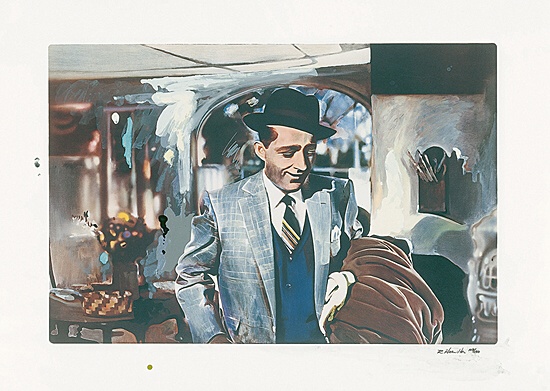
28. Richard Hamilton
(London 1922 - 2011 Henley-on-Thames, London)
"I'm Dreaming of a Black Christmas"
Farbsiebdruck auf Lichtdruck mit Collage 1971
75 x 100 cm Abb. 50,8 x 76,1 cm
sign. num.
Auflage 165 Exemplare
Lullin 082
[24270]
We cordially invite you and your friends to our opening
on Wednesday, the 23rd of January 2019, at 6:30 p.m.
The exhibition will be accompanied by a fully illustrated catalogue (104 pages and more than 90 images (price Euro 10).
The exhibition will be accompanied by a digital catalogue - you have the possibility to leaf through the cataloque (PDF) virtually here.
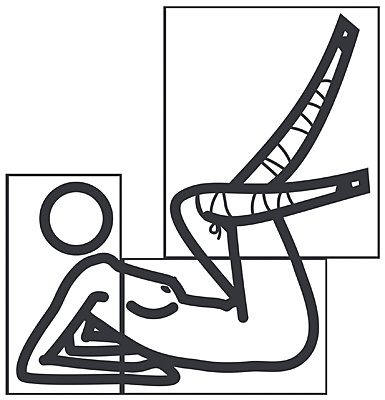
54. Julian Opie
(geb. 1958 in London)
"This is Shahnoza in 3 parts. 09"
dreiteiliges Objekt (schwarzer Samt/Stoff auf weißer Acrylplatte) 2008
121 x 115 cm x 3,8 cm
sign. num.
Auflage 30 Exemplare
[17609]
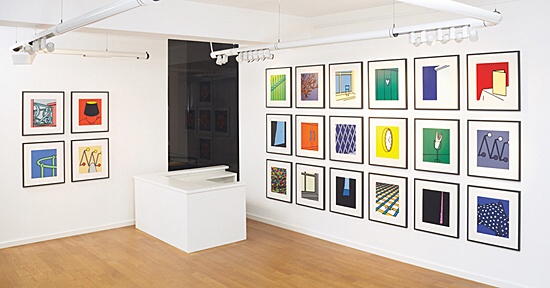
1. Patrick Caulfield
(London 1936 - 2005 London)
"Some Poems of Jules Laforgue"
Edition C - englische Ausgabe
Buch und vollständige Serie von 22 breitrandigen Farbsiebdrucken 1973
61 x 56 cm
sign. num. dat. bez. bet.
Auflage 120 Exemplare
Cristea 38 a - v
[23909]
Everything is arranged simply and legibly, full of the complex interaction between reality and illusion. The pictures grasp the essence of things and figures in their
simplest form and yet remain unsuitable for making simple statements about our present. Time and again, it is left to the viewer to complement and complete the work.
It is an interplay between the perceived and one’s own experience, as well as an invitation to expand what has been found by adding what one thought about it oneself.
The pleasure of seeing thus also includes knowledge and autonomous thinking.
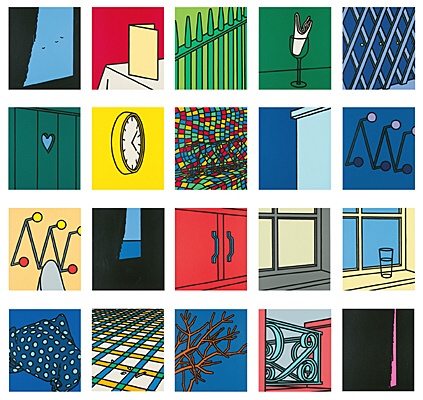
5. Patrick Caulfield
(London 1936 - 2005 London)
"Quelques poèmes de Jules Laforgue"
Edition B - französische Ausgabe
Buch mit 22 Farbsiebdrucken sowie 6 signierten lose einliegenden 1973
42 x 36 cm x 6 cm
sign. num. bez.
Auflage 220 Exemplare
Cristea 38 a-v
[24257]
"Ah! until nature has pity on us,
I’ll take my life monotonous."
"She left yesterday. Perhaps I mind?
Ah yes! So that’s what hurts!"
Jules Laforgue
Patrick Caulfield is one of those painters who did not like it when the term Pop Art was used in connection with their work. But despite his resistance to any categorisation,
his themes and motifs, as well as his artistic methods, resulted in lastingly relevant icons of British Pop Art.
Born in London in 1936 and deceased there in 2005, he studied at the Chelsea School of Art from 1956 to 1960 and, together with David Hockney and R. B. Kitaj, at the
Royal College of Art in London from 1960 to 1963. While still a student, he participated in the Young Contemporaries exhibition in London in 1961. After completing
his studies, he returned to the Chelsea School of Art as a lecturer from 1963 to 1971. In 1964, he was one of the artists who participated in the Pop Art exhibition
New Generation at the Whitechapel Gallery in London. Since then, his work has been presented in numerous British and international exhibitions.
In 1964, Caulfield produced his first prints. Over the years, they became increasingly reduced, schematic and direct. Formal considerations were his primary concern.
They focus on the relationship between a clearly defined form and a strong, nuance-free colour. In his efforts to make a formal solution which otherwise might have
seemed rather hermetic more easily accessible, he appropriated imagery from the world around him.
Printmaking became an essential form of expression for him.
Caulfield was a master of visual illusion. The objects and rooms depicted so simply are full of innuendos and allusions. Caulfield found a kindred spirit in
Jules Laforgue (Montevideo 1860 – 1887 Paris). Witty, ironic and full of melancholy, Laforgue described in his texts, poems and stories the small, simple things
of everyday life, the mundane circumstances of daily life.
The edition on view in the exhibition, Some Poems of Jules Laforgue (1973), contains twenty-two prints by Patrick Caulfield and twelve poems by Jules Laforgue.
The bibliophile books in English or French are supplemented by signed individual pages from special editions of the respective book.
The lamps and windows, the abandoned restaurants in their sharp-angled geometry of light and shadow, the slightly open curtains, the empty coat stands and flower
vases make visible what is not visible. They tell of happiness and sorrow, of rendezvous that have taken place or not been kept, of a zest for life or loneliness.
In their isolation, the objects and motifs are testimony to their own selves.
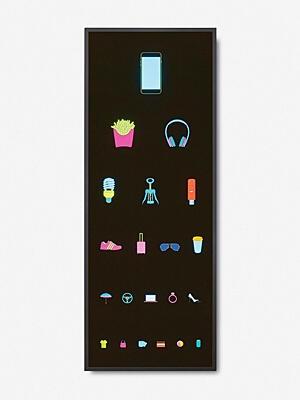
14. Michael Craig-Martin
(geb. 1941 in Dublin)
"Eye Test"
LED Lichtbox 2018
130 x 50 cm x 11 cm
sign. num.
Auflage 20 Exemplare
[24268]
"I am trying to present objects in the simplest way possible, and I don’t want to supply too much context. All the basic information should be in the object itself. The viewer brings all additional information to the image. Many of these objects are mass manufactured. They are essentially impersonal, but if you own one, it’s very personal. The identifying personal association with these objects, which are not personal, is an important modern experience − our real association, the strands of our feelings about the objects that surround us. It’s also because they are so familiar, we don’t think of them as important in the world, but actually they are the world. We are living in a very material world."
Michael Craig-Martin
Born in Dublin in 1941, Michael Craig-Martin is one of the most important and influential artists of the English and Irish art scene. He grew up in the
United States and studied at the Yale University School of Art and Architecture but spent most of his life in Britain. From 1974 to 1988, he taught at
Goldsmith College London. His students included Liam Gillick, Damien Hirst and Julian Opie. From 1989 to 1999, he was a member of the Board of Trustees
of the Tate Gallery.
Since 1969, he has participated in numerous British and international exhibitions, including the ground-breaking exhibition of British conceptual art
The New Art at the Hayward Gallery in London in 1972. Since then, he has exhibited worldwide and created large murals for museums, art societies, galleries and churches.
Craig-Martin is a conceptual artist. For him, the question of the presence of works of art is an important, if not the central idea of his entire oeuvre.
For fifty years now, his work has consisted of ‘complicating and exposing and at the same time seemingly simplifying’ the manifold conceptions of our relationship
to the things which we create, and which surround us.
He decided to make real objects the subject matter of his paintings – simple arrangements of everyday objects. They are ‘objects that are [...] all very commonplace,
easily recognizable, artificially produced, reproducible and machine-made’, as he himself has said. Objects are chosen with the intention of going beyond one-dimensional
interpretations. They are objects of our time, yet they also appear timeless in their form reduced to the line, in their weightless monumentality.
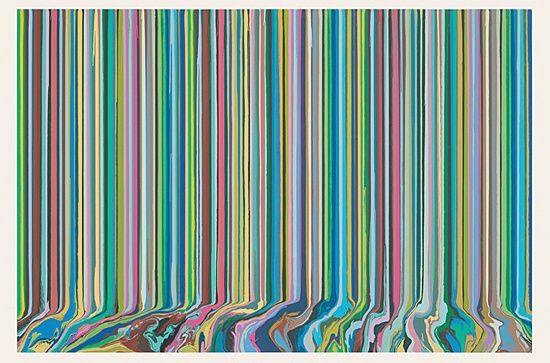
16. Ian Davenport
(geb. 1966 Sidcup, Kent, England)
"Poured Triptych Etching: Ambassadors (After Holbein)"
Farbradierung auf China, aufgewalzt auf Hahnemühle 2017
177 x 255 cm Pr. 159 x 239 cm
sign. dat.
Auflage 18 Exemplare
[24259]
"On a number of occasions over the years I have found things that have happened in the print studio that were completely unpredictable. For example, when printing my etchings, there is a ‘ghost image’ that occurs within the technical process. I asked if the print studio could print it up, and in fact it looks really beautiful. It has a very different, softer quality which was very unexpected."
Ian Davenport
The trademarks of Ian Davenport are his Poured Lines and Puddle Paintings, with which he became internationally successful and developed his artistic independence.
Poured Lines, his fifty-metre-long wall of colour under a railway bridge in the south of London, attracted international attention.
One day, in search of a new artistic direction, Davenport observed the flow of a drop of paint. The gravity that let it flow downwards and the randomness of the path
it took inspired Davenport to experiment with this.
Davenport applies the paints with a syringe along the upper edge of the picture and lets them flow downwards on thin sheets of steel. Initially, he let the drops find
their own way. The result was irregular lines; the drop of paint moved downwards in a slight curve, and chance determined the pictorial composition. Davenport then
began to steer the paths of the drops of paint. They became straighter, linear. The early randomness increasingly disappeared. For the Puddle Paintings, he interrupts
the flow of paint by bending the lower part of the metal sheet to a horizontal plane, on which the lines of colour flow into ‘puddles’.
Born in Kent in 1966, Ian Davenport studied at Goldsmiths College of Art in London and was nominated for the Turner Prize in 1991.
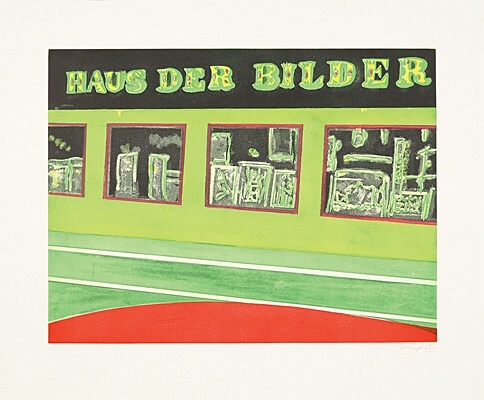
18. Peter Doig
(geb. 1959 in Edinburgh)
"Haus der Bilder"
Blatt 4 der Serie "100 Years Ago"
Farbaquatintaradierung 2000/2001
90 x 108,8 cm Pr. 66,5 x 87,5 cm
sign. num.
Auflage 54 Exemplare
[24271]
"In a way, I try to find images that have a sound rather than a meaning."
Peter Doig
The British painter Peter Doig, who lives and works in Trinidad, London and New York, has created inimitable visual worlds. Born in Edinburgh in 1959, he grew up in Trinidad and Canada.
His motifs, which generally depict people in nameless landscapes, suggest pictorial sources of his homeland; it is, however, not memory that interests him, but rather the idea of memory.
Although the individual elements appear subtly familiar to the viewer, they remain contradictory; they seem exotic, melancholic, ominous or gloomy. They are characterised
by a certain indeterminacy, and a strange silence seems to lie over the moment. Doig himself said that he never tries to ‘deliberately be gloomy, but […] always wanted
to create paintings that tell stories and suggest things.’
Peter Doig was nominated for the Turner Prize in 2008 and received the Wolfgang-Hahn Prize of the Museum Ludwig in Cologne that same year.
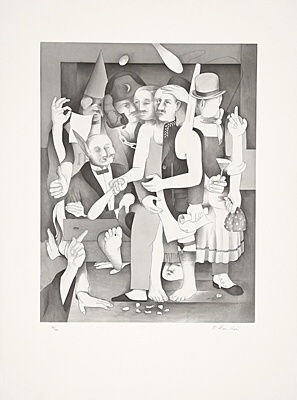
31. Richard Hamilton
(London 1922 - 2011 Henley-on-Thames, London)
"The transmogrifications of Bloom"
(Blooms Metamorphosen)
Weichgrundradierung und Aquatinta 1984-1985
78 x 56,5 cm Pr. 52,6 x 40,8 cm
sign. num.
Auflage 132 Exemplare
Lullin 143
[24083]
"You can do things in print you can’t do in any other medium."
Richard Hamilton
Brit Pop established itself as an independent movement earlier than Pop Art in the USA. What began as early as 1952 around the artists of the 'Independent Group' was to be perfected in the USA in the 1960s. The main protagonist of this small group of young painters, sculptors, architects, authors and critics was Richard Hamilton.
Born in London in 1922, Hamilton designed the poster for the legendary exhibition This Is Tomorrow (1956). Hamilton's collage Just what is it that makes home so different, so appealing? is a veritable incunabulum of early British Pop Art.
From 1938 to 1940, Hamilton studied painting at the Royal Academy School and, from 1941 to 1945, earned his living as an industrial designer. He resumed his painting studies at the Royal Academy School in 1946 but was expelled in July that same year for not following the directives of his teachers. This was followed by studies at the Slade School of Art in London from 1948 to 1951, where he dealt primarily with the medium of the etching. After a trip to New York in 1963, he began to combine photographic and painterly elements in his pictures, followed in the 1980s by an intensive examination of the possibilities of digital media and their effects on image perception and the visual arts.
Printmaking has held an outstanding position in Hamilton's work since the late 1930s and stands on an equal footing with his other artistic activities. A virtuoso mastery and combination of various printmaking techniques led to the creation of an extraordinary and diverse oeuvre.
In 1992, the Tate Gallery in London presented a retrospective and, in 2003, the Museum Ludwig in Cologne organised an exhibition of his works under the title Introspective, conceived in cooperation with the artist. In 1993, Richard Hamilton represented Great Britain at the Venice Biennale. The Tate Gallery boasts an important collection of his works.
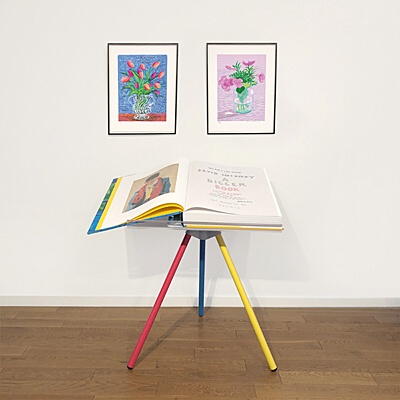
35. David Hockney
(geb. 1937 Bradford, Yorkshire)
"Untitled 346"
in "A Bigger Book" Limitierte Art Edition B (No. 251-500)
Buch mit einliegendem Ipad-Zeichnung-Print auf Arches 2010/2016
56 x 43,2 cm Abb. 44 x 33 cm
sign. num.
Auflage 250 Exemplare
[23219]
"What an artist is trying to do for people is bring them closer to something, because, of course, art is about sharing: you wouldn’t be an artist unless you wanted to share an experience."
David Hockney
David Hockney is one of the most influential contemporary European artists. He became famous above all for his Swimming Pool paintings of the 1960s, his sensitive portraits of friends and his parents, his still life motifs and landscapes, his photo-collages and stage sets. Landscape painting, more of a stepchild of contemporary art, has become the focus of his work in recent years, as a remarkable exhibition at the Museum Ludwig in Cologne demonstrated. The visitor was confronted with a veritable festival of colour.
Hockney has always been open to new techniques. Early on, he used Polaroids for his work, as well as colour copiers and fax machines. In addition to traditional painting, he has been experimenting with screen drawings for years. With his iPhone and iPad, he creates images that radiate a strong, colourful vibrancy and demonstrate his masterful command of printmaking techniques.
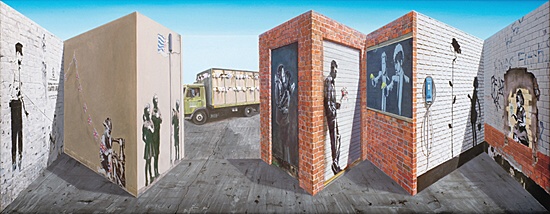
40. Patrick Hughes
(geb. 1939 Birmingham)
"Banksee"
Malerei auf dreidimensionalem Objekt 2018
66,4 x 143,6 cm x 21 cm
sign. dat. bet.
[24274]
"My philosophy is paradox. I am of a logical cast of minds, and find common sense hopeless. Philosophers have found paradox cropping up at the crux of every enquiry, and have tried to explain away this vicious circularity. I embrace the contradictory and celebrate the paradoxical. A paradox to me is like a pearl."
Patrick Hughes
The perception of illusion and reality is a key theme of in the art of Patrick Hughes. Born in Birmingham in 1939, the English artist has established an
international reputation as a painter of paradox.
His painted reliefs are ‘moving’ images that make use of reverse perspective. With illusionistic compositions, he confronts the viewer with the play of
constantly changing perspectives. The reversal of the conventional is intended to demonstrate to the viewer how entrenched our viewing habits have become – the
conditioning of human perspective is so strong that it negates all other experiences of space.
Patrick Hughes’s methods seem paradoxical, yet they reveal an impressive consistency. His works are intended to surprise, irritate and inspire contemplation,
to sensitise consciousness for space and movement.
The preferred motifs of his paintings and multiples are architectural views, with a preference for Venice, picture galleries, combinations of doors, and landscape
views. With his most recent works, he pays tribute to the British Street Art artist Banksy.
In addition to the unique pieces painted on wood, numerous multiples are also on view in the gallery.
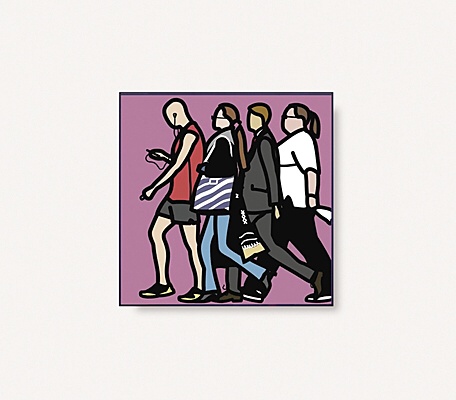
56. Julian Opie
(geb. 1958 in London)
"People. 6. Coloured."
Computeranimation, LCD Monitor 2015
40 x 40 cm x 11 cm
sign. num. dat. bet.
Auflage 4 Exemplare
[24242]
"I want to strip things down, to look at them for what they really are …"
Julian Opie
Julian Opie, born in London in 1958, has been one of the most important representatives of contemporary English art for nearly three decades.
Opie’s inimitable pictorial language consists in the reduction of individual characteristics. The human figure, the subject, is reduced to
characteristic peculiarities of physiognomy. ‘For each person I draw, I try to create a universal symbol‘, Julian Opie could not have characterised his own work more concisely.
In his works, he deliberately explores the limits of stylisation, which is particularly evident in the ‘moving’ lenticular objects. Here,
high-resolution images are combined in the computer by means of a complex process. The resulting image structure is then printed mirror-inverted
onto the lenticular material from behind with great precision.
In his computer-animated works, Opie brings movement into these reduced representations of people. For this, he works with flat screens or monitors,
on which the computer-controlled animations present a permanent flowing movement. A surrealistic effect results from the lack of space in the image,
the only spatial reference of which is the frame of the monitors.
In his search for new forms of expression, he draws inspiration from landscapes, the life of modern cities, other artists, design objects, Japanese
mangas, portraits from past centuries, Roman busts and ancient Egyptian art, as well as from billboard posters, illuminated advertising and less
art-related places. The Stone Heads series, limestone plates with black patinated bronze inlays, was inspired by an old London cemetery. ‘Engraved stone and
inlaid bronze have a heavy, slow melancholic mood. I work near Bunhill Fields, an old London cemetery (Bone Hill), which is a beautiful quiet place – I have
photographed and drawn the office workers passing the shortcuts to the graves of their 18th century London predecessors. Daniel Defoe and John Bunyan are buried
there, and the massaged stone graves and tombstones seem to indicate another overcrowded London.’
From 1979 to 1982, Julian Opie studied at Goldsmiths College, London. His works have been realised in a variety of media. The immediately recognisable, universal
language of his art is unique and comprehensible worldwide.
In 2001, he received the Music Week CADS, Best Illustration Award for his album cover design for Best of Blur. His works have been presented worldwide in private
and public spaces and are included in major public collections around the world.
All the works shown in the exhibition combine perfection and technical skill with the pleasure of seeing, knowing and thinking.
Mona Fossen
© 2019 Galerie Boisserée, Köln und VG Bild-Kunst, Bonn
Patrick Caulfield, Ian Davenport, Peter Doig, Richard Hamilton, Julian Opie
© 2019 Michael Craig-Martin, David Hockney, Patrick Hughes
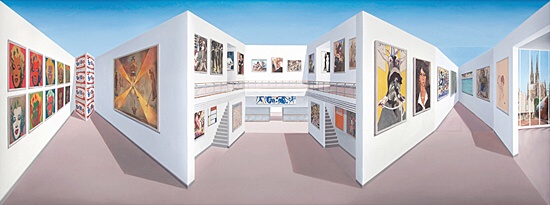
36. Patrick Hughes
(geb. 1939 Birmingham)
"Eau de Cologne"
Malerei auf dreidimensionalem Objekt 2016
62 x 164 cm x 25 cm
sign. dat. bet.
[23032]
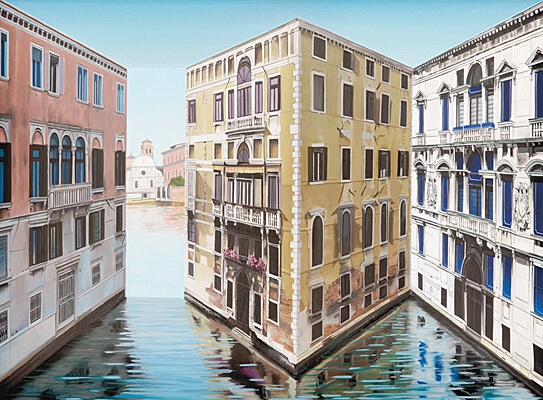
37. Patrick Hughes
(geb. 1939 Birmingham)
"Peaceful Palazzo"
Malerei auf dreidimensionalem Objekt 2017
32 x 43 cm x 10 cm
sign. dat. bet.
[23536]
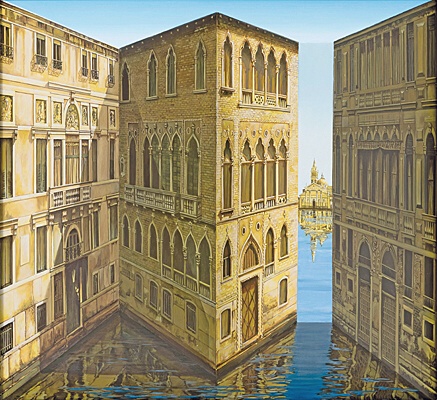
38. Patrick Hughes
(geb. 1939 Birmingham)
"Precious Palazzo"
Malerei auf dreidimensionalem Objekt 2017
71 x 75,5 cm x 14 cm
sign. dat. bet.
[24273]
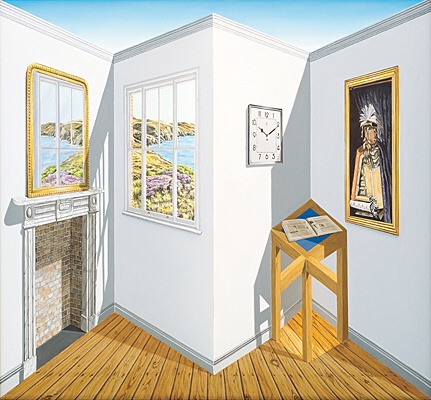
39. Patrick Hughes
(geb. 1939 Birmingham)
"Unstable"
Malerei auf dreidimensionalem Objekt 2018
71 x 75,5 cm x 18 cm
sign. dat. bet.
[24275]

40. Patrick Hughes
(geb. 1939 Birmingham)
"Banksee"
Malerei auf dreidimensionalem Objekt 2018
66,4 x 143,6 cm x 21 cm
sign. dat. bet.
[24274]
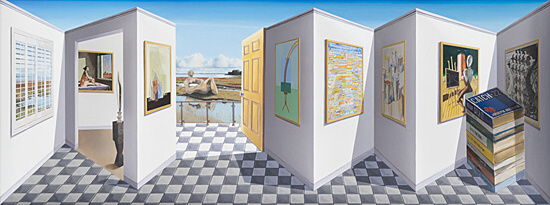
Patrick Hughes
(geb. 1939 Birmingham)
"Virtual Unreality"
Malerei auf dreidimensionalem Objekt 2017
48 x 127 cm x 25 cm
sign. dat. bet.
[23537]
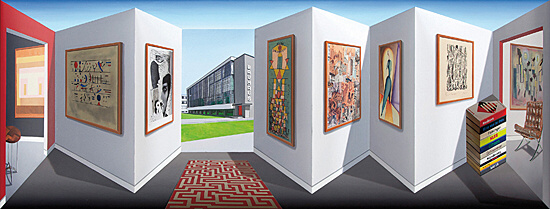
Patrick Hughes
(geb. 1939 Birmingham)
"Moving Bauhaus"
Malerei auf dreidimensionalem Objekt 2014
48 x 125 cm x 21 cm
sign. dat. bet.
[21928]

41. Patrick Hughes
(geb. 1939 Birmingham)
"Cloudy"
Dreidimensionales Multiple mit Archival Inkjet von Hand übergangen 2008
46,5 x 97 cm x 15 cm
sign. num. bez.
Auflage 45 Exemplare
[22308]
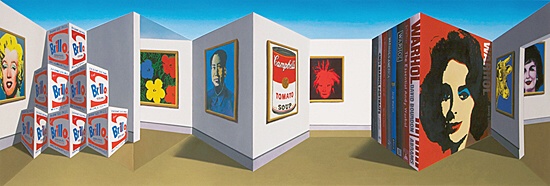
42. Patrick Hughes
(geb. 1939 Birmingham)
"Handy"
Dreidimensionales Multiple mit Archival Inkjet von Hand übergangen 2012
45 x 108,5 cm x 18 cm
sign. num.
Auflage 50 Exemplare
[20871]
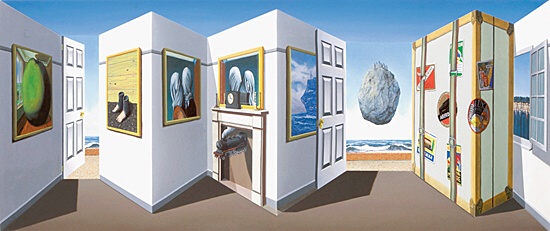
43. Patrick Hughes
(geb. 1939 Birmingham)
"Moving"
Dreidimensionales Multiple mit Archival Inkjet von Hand übergangen 2013
45,5 x 90 cm x 17,5 cm
sign. num.
Auflage 50 Exemplare
[21329]
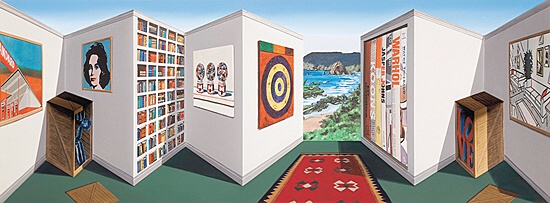
44. Patrick Hughes
(geb. 1939 Birmingham)
"Poppier"
Dreidimensionales Multiple mit Archival Inkjet von Hand übergangen 2014
45 x 101 cm x 17,5 cm
sign. num.
Auflage 50 Exemplare
[22206]
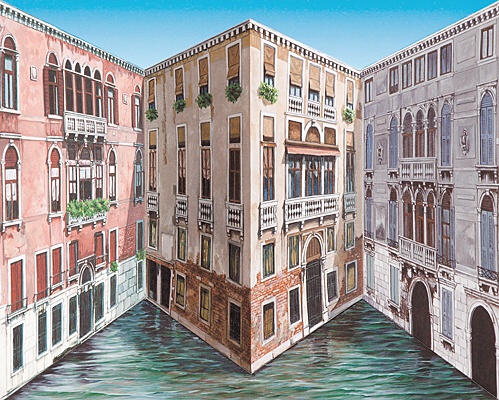
45. Patrick Hughes
(geb. 1939 Birmingham)
"Corner"
Dreidimensionales Multiple mit Archival Inkjet von Hand übergangen 2015
45 x 53 cm x 16 cm
sign. num. bez.
Auflage 50 Exemplare
[22799]
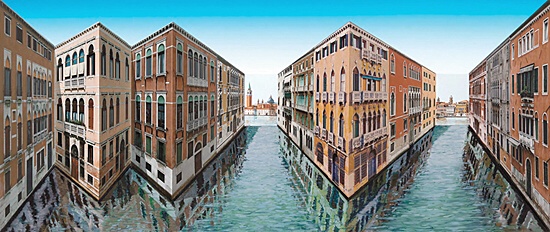
46. Patrick Hughes
(geb. 1939 Birmingham)
"Serenissima"
Dreidimensionales Multiple mit Archival Inkjet von Hand übergangen 2016
52 x 107 cm x 20 cm
sign. num.
Auflage 50 Exemplare
[23435]
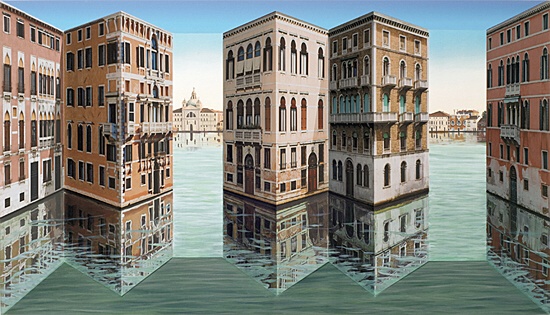
47. Patrick Hughes
(geb. 1939 Birmingham)
"Lagoon"
Dreidimensionales Multiple mit Archival Inkjet von Hand übergangen 2018
57 x 89,1 cm x 15,6 cm
sign. num.
Auflage 75 Exemplare
[24276]
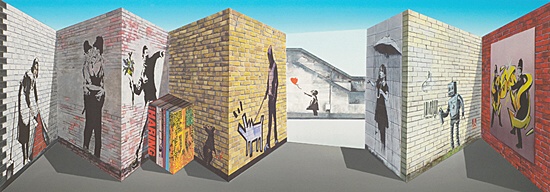
48. Patrick Hughes
(geb. 1939 Birmingham)
"Banksy"
Dreidimensionales Multiple mit Archival Inkjet von Hand übergangen 2018
45 x 102 cm x 17 cm
sign. num. bez.
Auflage 100 Exemplare
[24277]
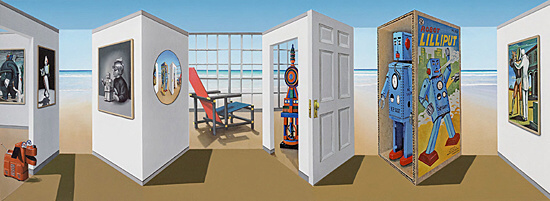
Patrick Hughes
(geb. 1939 Birmingham)
"Robotski"
Dreidimensionales Multiple mit Archival Inkjet von Hand übergangen 2017
45 x 100 cm x 16 cm
sign. num. bez.
Auflage 50 Exemplare
[23535]
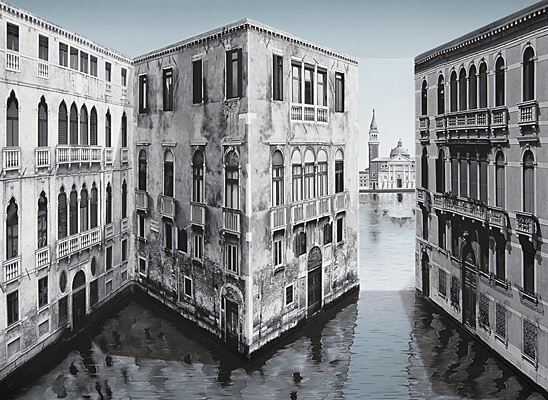
Patrick Hughes
(geb. 1939 Birmingham)
"Silver"
Von Hand übergangenes, photografisches Multiple mit Archival Inkjet 2017
46 x 58 cm x 17 cm
sign. num.
Auflage 50 Exemplare
[23416]
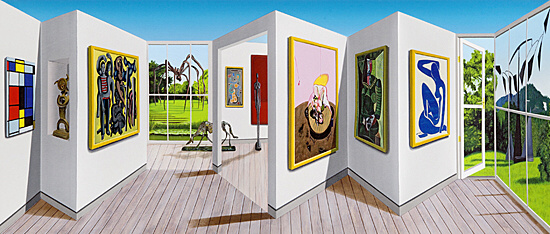
Patrick Hughes
(geb. 1939 Birmingham)
"Beyeler"
Dreidimensionales Multiple mit Archival Inkjet von Hand übergangen 2016
45 x 90 cm x 20 cm
sign. num. bez.
Auflage 50 Exemplare
[23440]
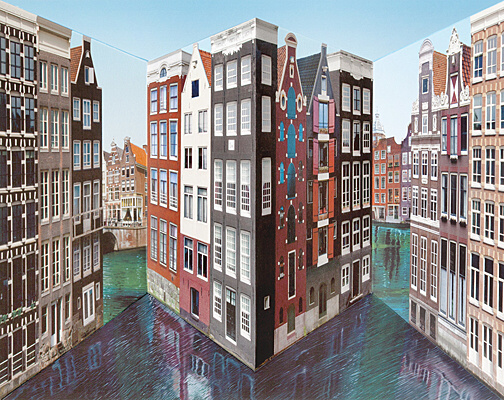
Patrick Hughes
(geb. 1939 Birmingham)
"Amsterdam"
Dreidimensionales Multiple mit Archival Inkjet 2015
45 x 53 cm x 16 cm
sign. num.
Auflage 50 Exemplare
[22792]
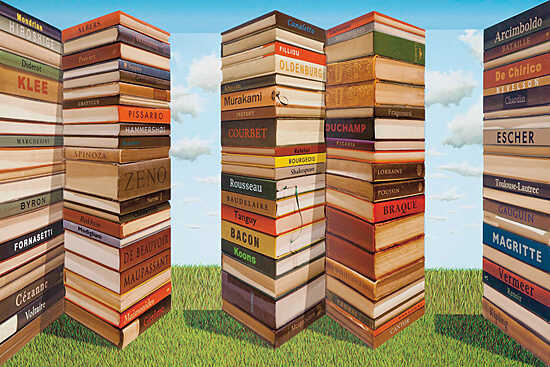
Patrick Hughes
(geb. 1939 Birmingham)
"Bookends"
Dreidimensionales Multiple mit Archival Inkjet von Hand übergangen 2015
89,5 x 63,5 cm x 17 cm
sign. num.
Auflage 50 Exemplare
[22335]
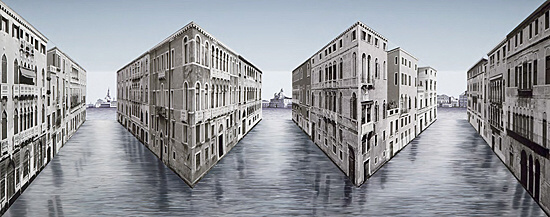
Patrick Hughes
(geb. 1939 Birmingham)
"Silvery"
Dreidimensionales Multiple mit Archival Inkjet von Hand übergangen 2015
52,5 x 111,5 cm x 21,5 cm
sign. num.
Auflage 50 Exemplare
[22786]
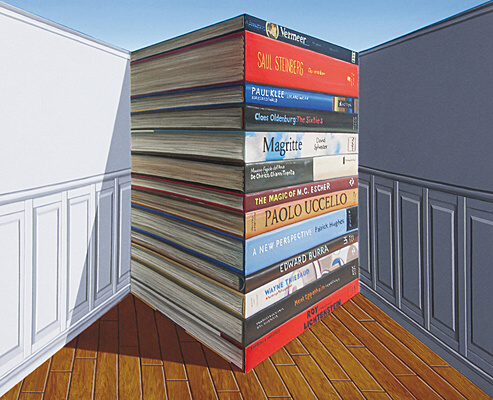
Patrick Hughes
(geb. 1939 Birmingham)
"Booking"
Dreidimensionales Multiple mit Archival Inkjet von Hand übergangen 2014
45 x 53 cm x 16 cm
sign. num.
Auflage 50 Exemplare
[21834]

Patrick Hughes
(geb. 1939 Birmingham)
"Moving"
Dreidimensionales Multiple mit Archival Inkjet von Hand übergangen 2013
45,5 x 90 cm x 17,5 cm
sign. num.
Auflage 50 Exemplare
[21265]
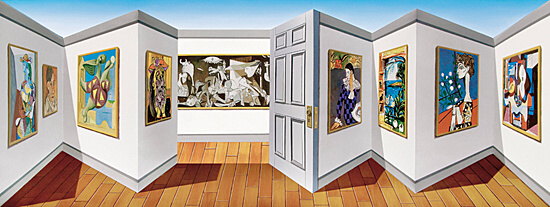
Patrick Hughes
(geb. 1939 Birmingham)
"Pablo"
Dreidimensionales Multiple mit Archival Inkjet von Hand übergangen 2013
53 x 117 cm x 20 cm
sign. num.
Auflage 40 Exemplare
[21486]

Patrick Hughes
(geb. 1939 Birmingham)
"Handy"
Dreidimensionales Multiple mit Archival Inkjet von Hand übergangen 2012
45 x 108,5 cm x 18 cm
sign. num.
Auflage 50 Exemplare
[20869]
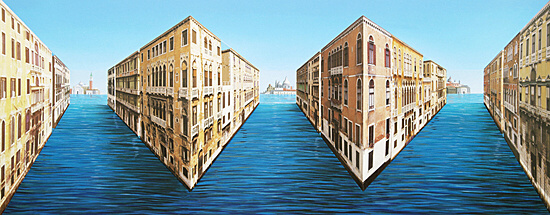
Patrick Hughes
(geb. 1939 Birmingham)
"Venetian"
Dreidimensionales Multiple mit Archival Inkjet von Hand übergangen 2012
43 x 88,5 cm x 17,8 cm
sign. num.
Auflage 50 Exemplare
[20802]
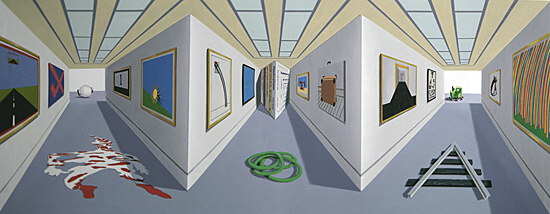
Patrick Hughes
(geb. 1939 Birmingham)
"Show"
Dreidimensionales Multiple mit Archival Inkjet von Hand übergangen 2011
43,5 x 89 cm x 18,5 cm
sign. num.
Auflage 50 Exemplare
[20010]
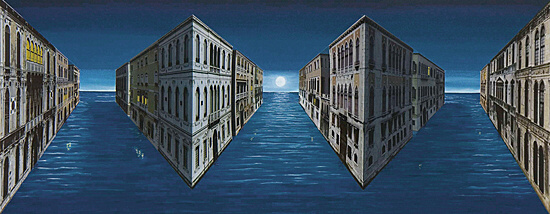
Patrick Hughes
(geb. 1939 Birmingham)
"Moonshine"
Dreidimensionales Multiple mit Archival Inkjet von Hand übergangen 2009
42,5 x 88 cm x 17,5 cm
sign. bez.
Auflage 45 Exemplare
[18933]
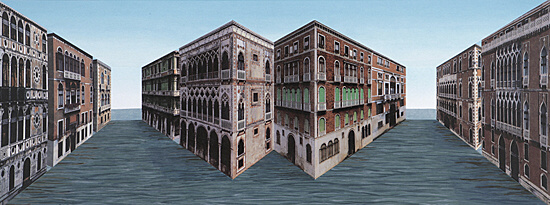
Patrick Hughes
(geb. 1939 Birmingham)
"Grand Canals"
Dreidimensionales Multiple mit Lithographie von Hand übergangen 2007
45 x 95,5 cm x 22 cm
sign. bez.
Auflage 45 Exemplare
[22306]
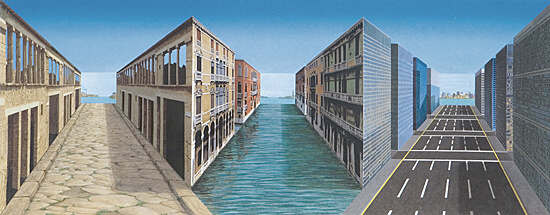
Patrick Hughes
(geb. 1939 Birmingham)
"History"
Dreidimensionales Multiple mit Lithographie von Hand übergangen 2007
42,5 x 88 cm x 17 cm
sign. num.
Auflage 45 Exemplare
[18582]
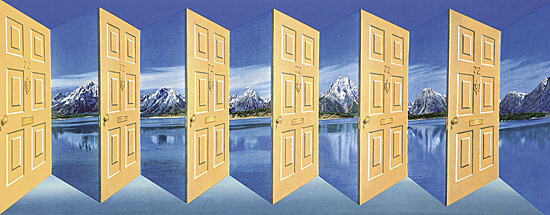
Patrick Hughes
(geb. 1939 Birmingham)
"Grand Tetons"
Dreidimensionales Multiple mit Lithographie von Hand übergangen 2006
46,5 x 97 cm x 14,5 cm
sign. num. bez.
Auflage 45 Exemplare
[19103]
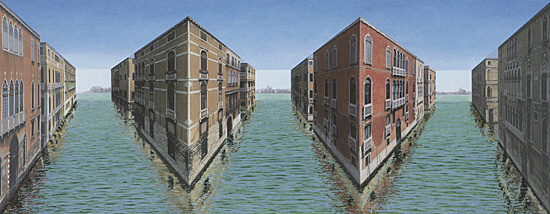
Patrick Hughes
(geb. 1939 Birmingham)
"Venezia"
Dreidimensionales Multiple mit Lithographie von Hand übergangen 2006
42 x 88 cm x 17,5 cm
sign. num. bez.
Auflage 45 Exemplare
[22305]
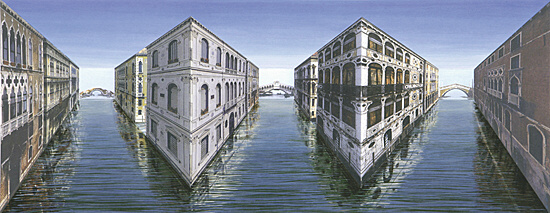
Patrick Hughes
(geb. 1939 Birmingham)
"Venice"
Dreidimensionales Multiple mit Lithographie von Hand übergangen 2006
42 x 88 cm x 18 cm
sign. num. bez.
Auflage 45 Exemplare
FG
[19799]
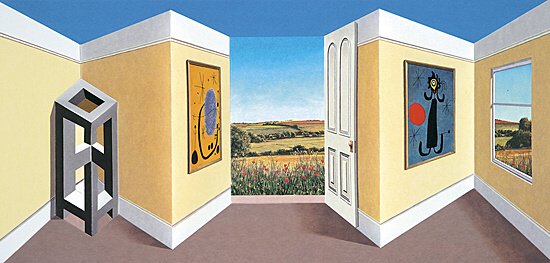
Patrick Hughes
(geb. 1939 Birmingham)
"Impossible"
Dreidimensionales Multiple mit Lithographie von Hand übergangen 2005
46 x 82,5 cm x 18,5 cm
sign. num. bez.
Auflage 45 Exemplare
[22304]
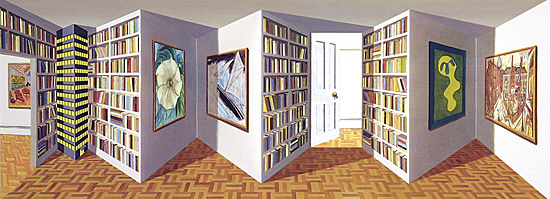
Patrick Hughes
(geb. 1939 Birmingham)
"Art apartment"
Dreidimensionales Multiple mit Archival Inkjet von Hand übergangen 2004
43,2 x 95 cm
sign. num. bez.
Auflage 45 Exemplare
[20700]
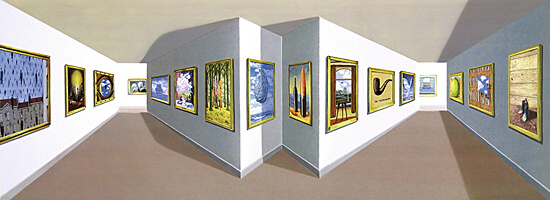
Patrick Hughes
(geb. 1939 Birmingham)
"Magrittes"
Dreidimensionales Multiple mit Lithographie von Hand übergangen 2004
47,5 x 102,5 cm x 24 cm
sign. num. bez.
Auflage 45 Exemplare
[19803]
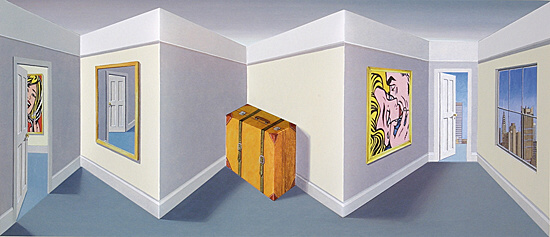
Patrick Hughes
(geb. 1939 Birmingham)
"Travel"
Dreidimensionales Multiple mit Lithographie von Hand übergangen 2004
42 x 80 cm x 19 cm
sign. num. bez.
Auflage 45 Exemplare
[19096]
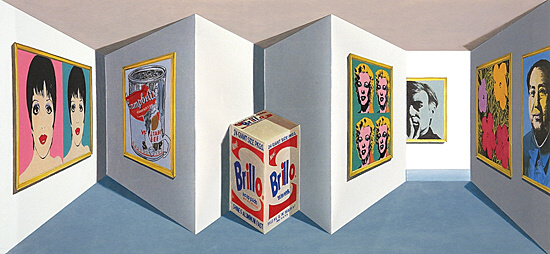
Patrick Hughes
(geb. 1939 Birmingham)
"Andy"
Dreidimensionales Multiple mit Lithographie von Hand übergangen 2003
44 x 80 cm x 19 cm
sign. num. bez.
Auflage 45 Exemplare
[22302]
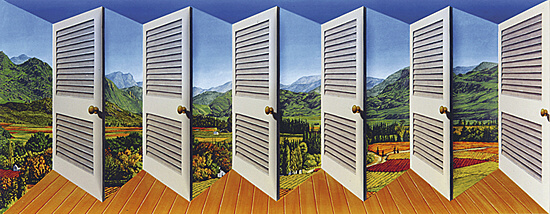
Patrick Hughes
(geb. 1939 Birmingham)
"Shutters"
Dreidimensionales Multiple mit Archival Inkjet von Hand übergangen 2003
46 x 96,5 cm x 15 cm
sign. num. bez.
Auflage 45 Exemplare
[19101]
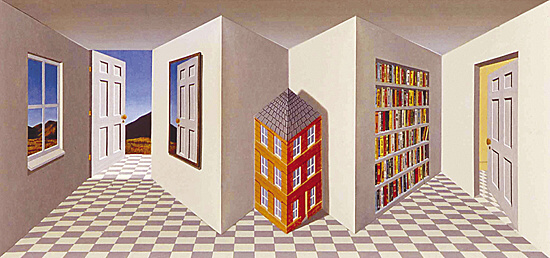
Patrick Hughes
(geb. 1939 Birmingham)
"Home"
Dreidimensionales Multiple mit Lithographie von Hand übergangen 2001
44 x 80 cm x 19, 5 cm
sign. num. bez.
Auflage 40 Exemplare
[19801]
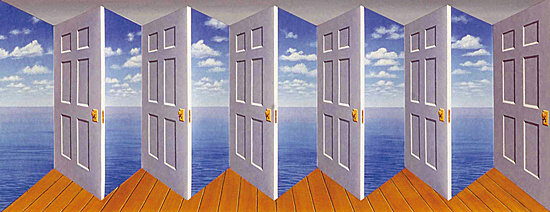
Patrick Hughes
(geb. 1939 Birmingham)
"Horizon"
Dreidimensionales Multiple mit Archival Inkjet von Hand übergangen 2000
46 x 97 cm x 15,5 cm
sign. num.
Auflage 40 Exemplare
[22301]
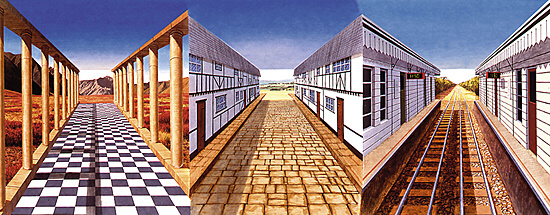
Patrick Hughes
(geb. 1939 Birmingham)
"Journeys"
Dreidimensionales Multiple mit Lithographie von Hand übergangen 2000
42 x 87,5 cm x 17 cm
sign. num. bez.
Auflage 40 Exemplare
[19097]
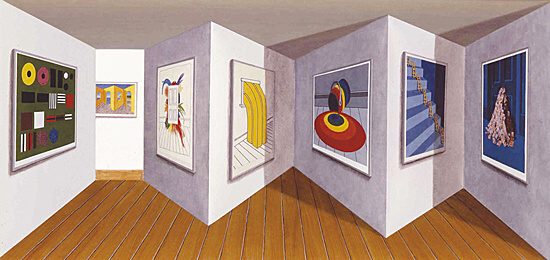
Patrick Hughes
(geb. 1939 Birmingham)
"Retroperspective"
Dreidimensionales Multiple mit Lithographie von Hand übergangen 2000
44 x 77 cm x 21 cm
sign. num. bez.
Auflage 40 Exemplare
[18819]
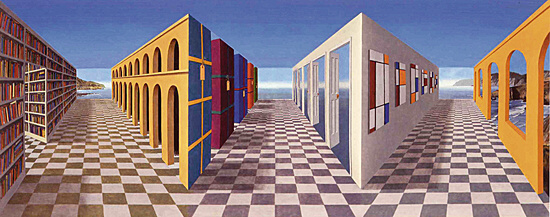
Patrick Hughes
(geb. 1939 Birmingham)
"Multiples"
Dreidimensionales Multiple mit Lithographie von Hand übergangen 1999
41,5 x 87 cm x 17 cm
sign. num. bez.
Auflage 35 Exemplare
[19800]
Patrick Hughes
Patrick Hughes – Biography
At the young age of three or four, whilst staying at his grandparents’ house in Warmingham Road, Crewe, Patrick Hughes would sleep in The Glory Hole – the cupboard under the stairs.
Lying awake listening to the air-raid sirens and falling bombs, Patrick would look up and stare at the stairs. "We were looking up at these stairs the wrong way round – up and down,
up and down – stairs that only a fly could walk up. It must have made a strong impression: being bombed and in the dark and sleeping with my mother and seeing everything the wrong way round.”
Patrick has made a life-long career out of doing things the other way round.
Patrick Hughes was born, Peter David Hughes in October 1939 in Birmingham, the eldest son of Peter and Florence Hughes. His father was a commercial traveller in groceries and a salesman,
and his mother a housewife. The family moved around, living in suburban Hayes in Middlesex and later in Hull. It was an unhappy household, a quarrelsome and hostile environment. Patrick’s
refuge was in books and in his imagination. Books came from the public library as his was a book-less house. "A book is a way out…” says Patrick, "…they are like little doors – you open
the little hinged rectangle of the book and step out. I escaped from my suburban hell hole of an upbringing through the book.”
In 1950 Patrick went to Hull Grammar School where he did ‘O’ level art, taught by Ian D. H. Fothergill. Fothergill encouraged the students to write about modern art and Patrick wrote in
defense of Picasso. But it was Fothergill’s set designs for the school plays, with their use of perspective and painted shadows which amazed Patrick and left a lasting impression.
At seventeen Patrick left school, home and Hull, for London, never to return. He took a job as a window dresser and salesman at Rubans de Paris in London’s West End, near to the Portal
Gallery. He spent his spare time reading and writing and visiting local galleries, looking at works by René Magritte, Marcel Duchamp and Paul Klee and taking in the contemporary scene.
The following year, Patrick met his first wife Rennie Paterson, then an art student at Reading. Three sons, John, James and Solomon, followed in quick succession and Patrick and Rennie
returned to live with her parents near Leeds.
In 1959 Patrick enrolled at the Leeds Day Training College to study English literature with a view to teaching English and a writing career. On the first day, asked to write an essay on
six books he had recently enjoyed, Patrick wrote about N. F. Simpson, Eugène Ionesco, Franz Kafka, Lewis Carroll, Samuel Butler and Christian Morgenstern. But according to Mrs. Hanson,
the English teacher, this was not English literature. English literature was the nineteenth century writers, the Brontës, George Eliot, Jane Austen and Charles Dickens. She advised him to
study art instead. So Patrick’s art career began out of acts of rejection and suggestion, not through intention.
The Art Department was run by Muriel Atkinson and John Jones. They encouraged creativity and experimentation. Patrick began making low reliefs in plaster. Then he began making cut-outs in
paper and wood. Painting white emulsion paint as the ground and using household gloss paint as the finish. It was a surprise gift from John Jones for his twenty-first birthday – a subscription
to Art News and Review – that stimulated Patrick to send off slides of his work to the Portal Gallery in early 1961. Later that year, on the Monday after the Friday when Patrick completed
his course at Leeds Day College, he had a highly successful solo exhibition at the Portal Gallery, London. It was the first one-man show by a so-called Pop Artist.
The critics of the day George Melly and David Sylvester were early champions. Sylvester wrote, "This artist has the gift, synonymous with creativeness, of being able to be surprised by what
the rest of us take for granted. Here is a painter who really has something to say, and his arrival on the scene gives me a rare sense of exhilaration.” Parallels were drawn with the works
of Harold Pinter, Paul Klee, Samuel Beckett and Spike Milligan. Patrick sold two-thirds of the forty or so paintings exhibited.
With the success of his Portal Gallery show in 1961, Patrick’s job moved from schoolteaching to art lecturing at Bradford School of Art in 1963, and then in 1964 at Leeds College of Art.
Patrick’s colleagues included the artists Anthony Earnshaw, Robin Page and George Brecht, and his students – Trevor Winkfield, Glen Baxter, Les Coleman, Jeff Edwards, Les Evans and Paul Hammond.
It was whilst at Leeds, that Patrick made two of his seminal works, Infinity, 1963, inspired by standing on the railway station at Leeds and looking at the railway tracks, and his first reverspective,
the Sticking-out Room of 1964. In 1968–69 Patrick was giving lectures about paradoxes and jokes in Exeter and London and Leeds with George Brecht, the Fluxus artist. Several years later, in 1975,
they were to collaborate on Vicious Circles and Infinity, A Panoply of Paradoxes, the first ever book on the paradox. It has sold 100,000 copies and been translated into Japanese, German,
Dutch and Spanish.
Around this time, Patrick began painting vicious circles and versions of the ouroboros in search of a theoretical basis for his ideas. He had moved his family back to London and commuted to
Leeds to teach.
In 1970, Patrick was one of ten artists invited to take a room at the Institute for Contemporary Art in London. He constructed a 12ft x 8ft sticking-out room within the room – a large paradoxical
object, which visitors could not just look at but could experience for themselves. That same year Patrick met Angela Flowers who was about to open her own gallery. He was chosen as her first artist
to show and he has been showing with Angela Flowers to this day.
In 1970 Patrick and Rennie divorced. In 1971 Patrick married the artist and writer Molly Parkin. They parted in 1980, divorcing in 1981.
The first half of the 1970s saw Patrick living in Chelsea and Ladbroke Grove and painting rainbows. The rainbows became very popular as prints, which he made with Coriander Studios for Christie’s
Contemporary Art and as postcards for Camden Graphics. Over the years about 1,000,000 rainbow postcards and 10,000 screenprints have been sold. People thought the rainbows were cheerful. But Patrick
felt they were misunderstood; they were acts of subversion, visual puns. His interest lay in the contradiction of turning or fixing an experience or event into a solid thing.
In 1975, sustained by his sales of the rainbows and his book, Patrick moved to St Ives and leased a studio with a ladder down to the beach. It was here he made On Reflection: St Ives Bay. In 1979 he
left the village of St Ives for the village of the Chelsea Hotel in New York, another artists’ colony where he started to write More On Oxymoron. He hung out with the artists Keith Haring and Kenny
Scharf, the musician Klaus Nomi and the theatre director Charles Ludlam. It was whilst in New York that he began to work entirely on paper as he found he could get more ideas down faster. Patrick
returned to London in 1983 and stayed at the Chelsea Art Club and had a studio in Notting Hill Gate for a short while. After showing at Angela Flowers Gallery that year, Patrick decided he needed
to change his method of working which had typically involved a slow gestation with months of thinking, a few days of making, and a few minutes of contemplation by the viewer. Moving again, this
time to a squat in Thornhill Square in North London, with his son James Heartfield, Patrick began painting small watercolours, usually three a day. This technique liberated him to have lots of
ideas and variations on themes. Motifs included the crucifix, skeletons, eggs, yin and yang, and shadows, amongst other ideas. He made hundreds and sold most of them. This change enabled Patrick
to see where he was going and what really interested him.
When Patrick moved to Belsize Park in 1985 he went back to painting on canvas but in oils. In pictures like Self-Criticism he began to look at the relation between representation and reality.
He re-examined the rich vein of the old Sticking-out Room of twenty years earlier, he explored reverse perspective, shaped boards and used all kinds of imagery.
In 1987 Patrick met and married his third wife, the historian and writer, Dr. Diane Atkinson. Together they moved to East London, which is where they live today.
2011 marked Patrick Hughes’ Fifty Years in Show Business; to coincide with this half century, Patrick had a major retrospective exhibition at Flowers Gallery, London. Also published his third book
on the paradox and oxymoron, Paradoxymoron. In 2014 Patrick was awarded an honorary degree from the University of London’s School of Advanced Study, in recognition of his outstanding contribution to
education and research. His artworks continue to be exhibited worldwide, including recently in America, Europe, Japan, Korea and Switzerland.
Busier than ever in 2015, Patrick is featured in the continuing touring group exhibition Visual Deception II; Into the Future in Nagoya, Japan. Op Art - Kinetic - Light in the Würth Collection.
Josef Albers and Vasarely to Patrick Hughes opens in May at Museum Würth. Imminent solo exhibitions include Winsor Gallery, Vancouver opening January 2015.
A substantial 240 page monograph, A New Perspective, with essays by Professor Dawn Ades, Professor Martin Kemp and Dr. Thomas Papathomas is now available.
The English artist Patrick Hughes (b. in Birmingham in 1939) has established an international reputation as a painter of paradox. The perception of illusion and reality as well as optical irritations are the main themes of his art.
With his illusionistic compositions, he confronts the viewer with the play of constantly changing perspectives. By reversing conventional perspective, he demonstrates how rigid our viewing habits are – the human sense of perspective is so strong that it negates all other experiences of space.
Patrick Hughes’s methods seem paradoxical, yet they are marked by impressive consistency. His works surprise, irritate, inspire to think and sensitise the consciousness for space and movement.